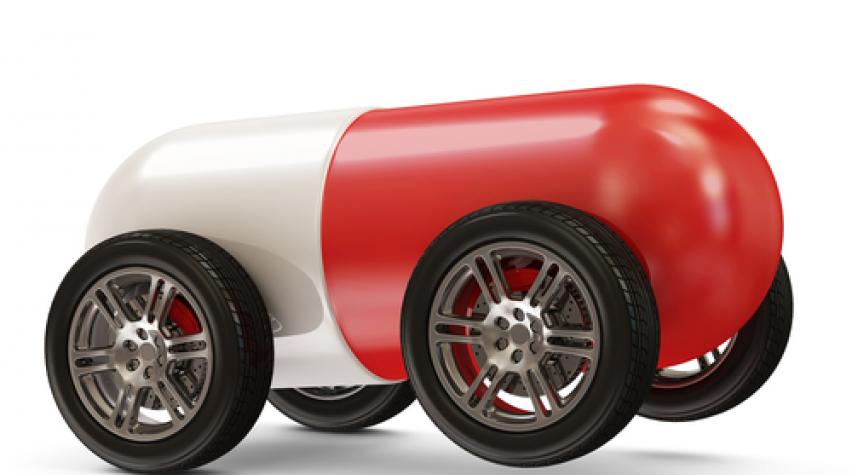
The administering of therapeutic agents dates back to the Egyptian era; there was even a time when clay pellets were used! Inhaling vapors of burning objects to chewing plants with medicinal properties were primitive modes of drug delivery. Vaccinations followed suit. Fast forward to the 60s, which brought the inception of controlled drug delivery and time release systems, which permitted slow/continuous release of drugs. Since then, the drug delivery field has grown leaps and bounds, with drug delivery systems taking cues from advanced materials, biodegradables, MEMS technology, even nanotechnology.
Computers and drug delivery
The design and synthesis of drug delivery systems has evolved with the advances and innovations in science and technology. Studies of the kinetics of drug release into the body was what paved the way to the long road of exciting research, punctuated with clearer understanding and mind-blowing discoveries. When controlled release delivery systems garnered the attention of pharmaceutical companies, this was a major boost for further research. Mathematical modeling of drug delivery was also crucial to the bolstering of its development. Computer simulations aid in the better understanding of drug release mechanism, optimization of dosage, modeling and quantifying the transport mechanism sans the multitudes of experimental studies.
Nanoscience, genetics, and materials science
Dramatic changes have been witnessed in the past few decades in this field: in addition to the conventional routes of delivery (oral, inhalation, via skin, intravenous injection, etc.), nanomedicine and exploitation of genomics/proteomics in treatment have entered mainstream pharmaceutics. Drug delivery wouldn't be where it is today without the advancements in the field of materials. Novel materials, ranging from biomaterials and intelligent polymers to hydrogels have been engineered to become successful drug vehicles, by tailoring them to our specifications. Synthetic hydrogels for instance, have seen applications beyond its pervasiveness in the making of contact lenses. Dr. Nicholas Peppas of UT-Austin popularized the use of this material as an effective drug delivery system. Hydrogels, water-swollen cross-linked polymeric structures, permit the rate of release of drugs to be controlled by simply changing the hydrogel structure--its crosslink density, hydrophilicity, degree of swelling, etc. Also the lesser degree of interaction between the vehicle and drug allows easier release. Researchers at TAMU have recently developed hydrogels with calcium carbonate microspheres to encapsulate drugs, with the release under the control of the patient. Smart materials, including hydrogels as well as liposomes, polymers and nanomaterials, which respond to external stimuli like pH and temperature, offer great advantages in the controlled release. Just like everything else, nanotechnology revolutionized drug delivery as well. MIT's Professor Langer has worked vastly on the application of nanotechnology in drug delivery, from Accurins, nanosized delivery vehicles for targeting cancer cells to developing microchips elucidating the penetration of nanoparticles hence nanoparticle targeting and more in the pipeline. Small interfering RNA (siRNA) genetic material loaded onto silicon nanoparticles capable of interfering with gene expression promises great potential as a drug carrier for treatment of cancers, viral infections and hereditary disorders. Recently nanodiamonds have stolen the limelight with uses ranging from drug delivery of chemotherapy drugs for treating chemotherapy resistant cancers to nanodiamond-silk hybrids for fluorescent bioimaging and drug delivery.
Wafers and micro-needles
The Gliadel Wafer, a PixarBio product has received worldwide acclamation. It is a dime sized wafer capable of delivering chemotherapeutic agent directly to the brain, for the treatment of glioblastoma, eliminating the side effects of systemic chemotherapy like hair loss and sparing healthy cells. Very soon we could be saying goodbye to those excruciating hypodermic needles! A very noteworthy project was the painless microneedle patches for immunization developed by Georgia Tech/Emory scientists for the influenza virus, containing an array of minute needles (also ones that dissolve) coated with the inactivated virus that are so small that they don't reach the nerves causing pain. They are not just painless, but could be self-administered, and with the added advantages of low cost, easy storage and transportation, smaller doses and safe disposal, convenient especially for developing countries. This transdermal drug delivery system could be finding their ways into fighting other viruses as well. With a growing aging population and the mushrooming of chronic diseases coupled with the tremendous advancement in technology, research and engineering in this field of healthcare seems only obligatory, focusing largely on improving efficiency and target while minimizing side effects.



Comments
Farm products take a miscellany of the quadruplet reviewed nutrients that, reviewers say, is perfect for maintaining musculoskeletal power and wholeness as we age. It should be noted that lofty intake of artificial salt has been linked to accrued rate of mortality and a heightened venture of lung mansion. This sum is a substance